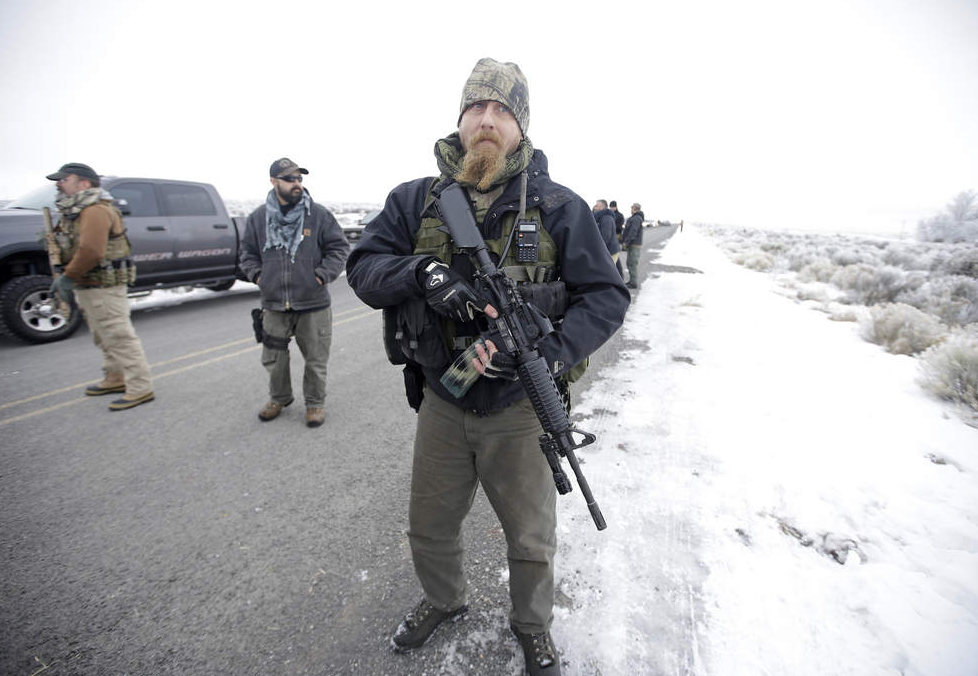
By Rob Shaul
Last Spring, we were planning to send a researcher to Oregon during the standoff at the Malheur National Wildlife Refuge in Oregon just when the standoff ended.
I was interested in the tactical training and experience of the refuge occupiers, and how local and federal law enforcement was responding to this new type of threat.
One of the groups at Oregon was the Oath Keepers, which is a patriot group whose membership is made up of former military, law enforcement and first responder personnel.
Another group regularly held tactical training exercises.
What struck me was how it was possible the tactical training and proficiency of these group members could be greater than the local front line law enforcement officers, and how this greatly heightened the threat.
Would local law enforcement call in the FBI HRT or another tier 1 federal LE SWAT/SRT team? Would the rules of engagement change? Would overwhelming firepower be deployed from the outset?
Tragically, with the officer killings in Dallas and Baton Rouge, the issue of tactically knowledgeable assailants has come to the forefront. In both cases, the shooters were former military, and proficient with assault rifles.
Owning an AR, or “Black Rifle” is different than being tactically proficient with it. One of the questions we’ll ask as we compile our guide to shooting schools will be if the schools limit their highest level instruction to military and law enforcement – or if any civilian who pays the course fee can enroll and learn the same information.
The AR-15 is by far America’s most popular rifle, and it’s growth in popularity has been accompanied by an explosion in tactical shooting schools. Few of these schools limit their instruction to LE and the military – and indeed, I’d wager many depend upon civilian students to pay the bills.
The reality is, law enforcement now faces a potential adversary armed as well, and perhaps more tactically proficient with their weapon than many front-line officers – many who are unable to squeeze in much beyond minimal firearms and tactical training, and who get to the range just one a quarter.
Last December I visited the Fresno SWAT team for a trigger study. Fresno has a part time SWAT team, which trains just three times, every two months. Much of that training is required to keep up with certifications and other required training – little is available to better train carbine marksmanship or tactics to counter an experienced, knowledgeable, tactically aware active shooter.
Many schools offer civilians high end long distance shooting instruction, vehicle tactics, Close Quarters Battle instruction and counter measures, and force on force training. Practically, this means adversaries, or single shooters could not only know how LE will respond, but have the knowledge and training to take the fight to the officers – perhaps at a higher proficiency than many of the officers responding.
This is a scary deal. I’m not sure the answer.